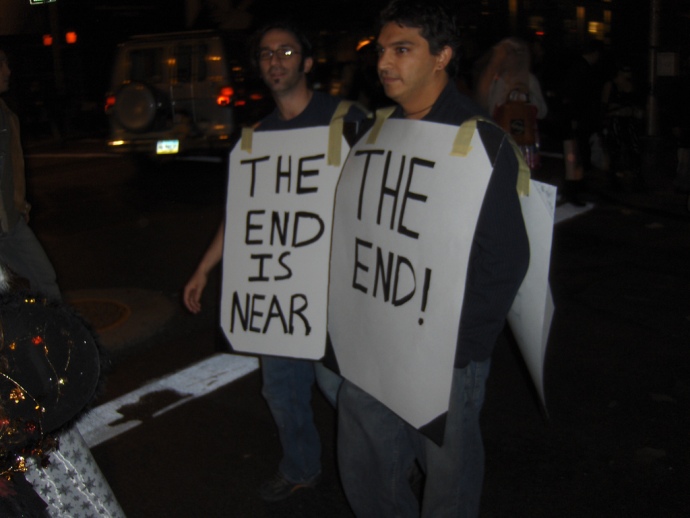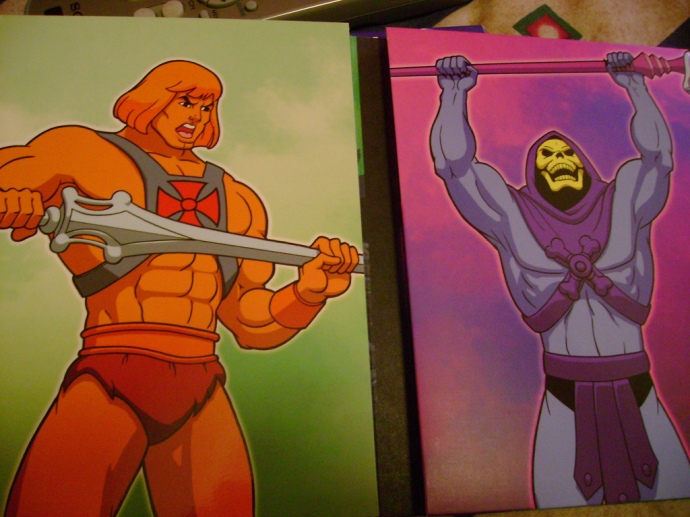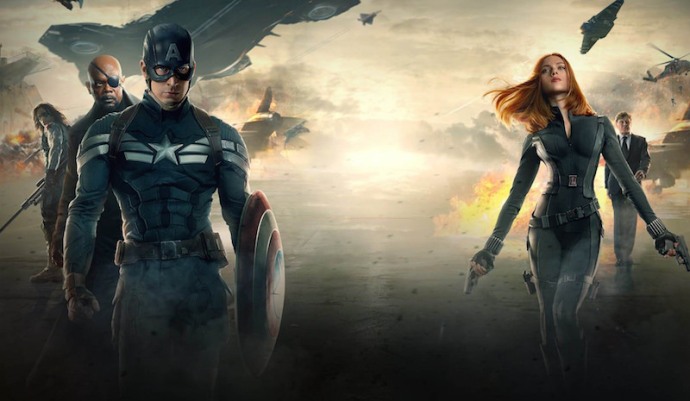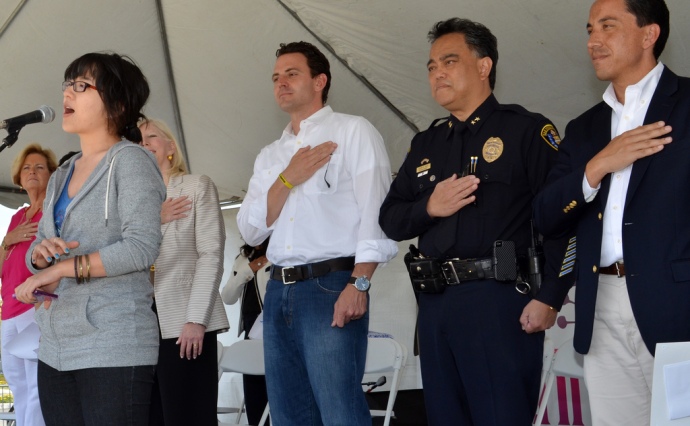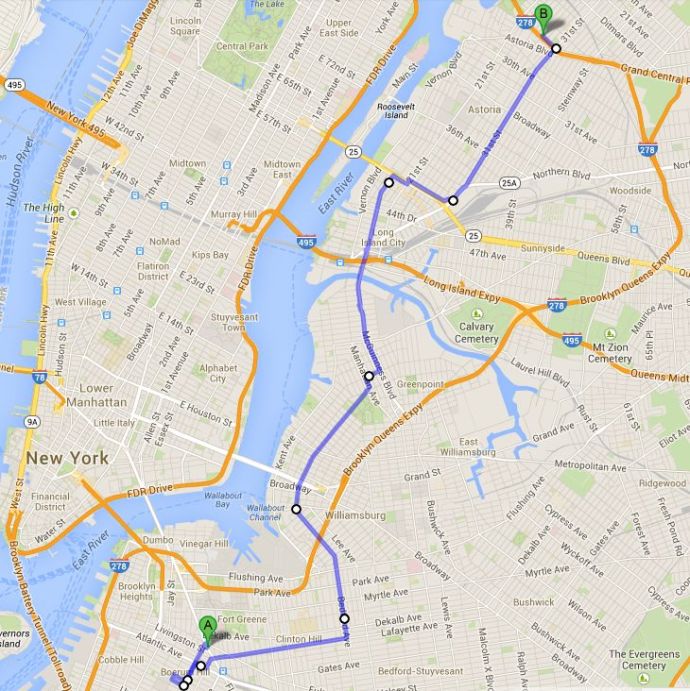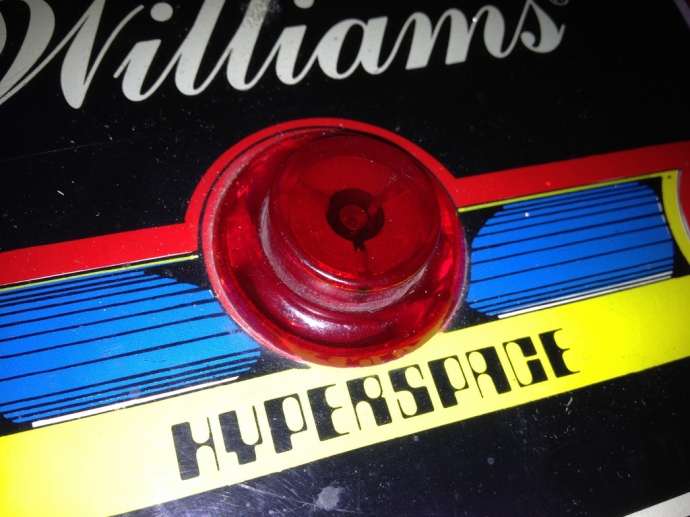Photo attribution: https://www.flickr.com/photos/joeshlabotnik/ / CC BY 2.0
Undergoing a dramatic and completely involuntary lifestyle rearrangement has been a depressingly frequent occurrence in my life. From getting torn from my hometown as a child by a particularly dramatic familial disintegration, to having my left leg shattered into a million pieces by a wild Ford Taurus, to other, less action-packed ways to have my personal status quo sent into a bottomless abyss, I’ve had to rebuild from the ground up at least seven times that I can think of off the top of my head. As a result, I’ve spent many a worried, harried night in bed thinking about “endings.” I’m not a fan of them. To be more precise, I hate them with the fury of a thousand suns. Change is not something I embrace easily to begin with, and when that change comes in the form of everything in my life that makes me feel safe or happy being completely blown up with a bloody neutron bomb, I don’t react in the best way. I cannot stand the idea of something that you enjoy or appreciate ending. This is probably a function of my past life experiences, an instinctual, PTSD-style reaction borne out of the traumas, disappointments, failures, and raw pain that the aforementioned “lifestyle rearrangements” have wrought. On the other side of one of those violent shifts in my life, when I actually manage to find something that doesn’t punch me right in the soul, I grab onto it with both hands, refusing to let go, much like Charlton Heston.
So, it should come as no shock that I feel the same way about stories that I enjoy. I always hate getting to the end. I remember when I would watch the original Star Wars Trilogy as a child, or the Back to the Future Trilogy. I would always get sort of sad and wistful as I would get near the end of the third entries, because it meant the adventure was almost over. An imminent return to boring reality was imminent. I got warm fuzzies when, at the end of the final episode of the anime series Outlaw Star, the usual “To! Be! Continued!” that wrapped up each entry was replaced with a hearty and winking “See! You! Again!” promising more adventures, even though they never came (you heard me, goddamn it, they never came). I was, quite possibly, the only person in the universe who was not annoyed by the 378 or so endings to the film adaptation of The Return of the King, because it felt like the story would still somehow continue. I was disappointed and vaguely sad when Sam finally closed that door.
Since endings affect me so, the way creators handle the endings to their stories (assuming they get the chance to end them) is more important to me than to most people. Which makes it all the more galling and frustrating that, while conversing with a friend recently about quality endings to television series, the only genuinely good final episodes I could name, after thinking about it for several minutes, were the final episodes of Star Trek: The Next Generation, Babylon 5, and Breaking Bad. Which begs the question, what on Earth is wrong with all of these Hollywood writers? Why can’t they end their stories well? Why is it, when they get to the end of their tales, the writers either dive off the freaking Cliffs of Insanity and pull something that feels like an episode from a completely different series out of the ether, or completely drop the ball and deliver a fundamentally unsatisfying and clearly rushed and cobbled together bookend for their show? I’ve argued, at length, that when you’re telling a continuing, serialized story, you have to at least have a vague notion of where you’re going with it, lest you end up with a tangled, nonsensical mess that drives your viewers insane with unanswered questions and dangling plotlines. That would explain the terrible, terrible ending to a series like Lost, but the phenomenon of the disappointing final episode cannot be explained away so easily, because the final episodes of nearly every sitcom and stand-alone episodic series are equally abysmal!
So, what’s going on here? As I just pointed out above, lousy endings to serialized stories are the easiest to explain, with creators often either not planning ahead well-enough (Lost, The X-Files, Alias), or over-planning to the point that they end up writing themselves into a corner (the rebooted Battlestar Galactica, The Sopranos). Everyone needs to learn from Babylon 5 here. J. Michael Straczynski knew precisely where he was going, even if he didn’t know every detail of how he would get there, and even had “trap doors” ready to get rid of any character cleanly in case an actor died or wanted to leave (he ended up utilizing a few of these). As a result, B5‘s final episode, “Sleeping in Light,” which I’ve previously covered, is a perfect epilogue to the story.
Now, stand-alone dramas and sitcoms are much harder to explain. Why does an otherwise quality show suddenly go pear-shaped in its final moments? Laziness is the most frequent culprit with stand-alones, I suspect. The final episode of Seinfeld, a prime example, reeks of extreme “senioritis,” as if the writing staff was staring at the clock, waiting for the last school day to end so they could just go to college and get laid, already, exclaiming, “who gives a damn what happens to these characters, no one is ever going to watch all the episodes in order!” This is the only thing that can possibly explain why one of the greatest comedies in television history ends with a clip show and the main characters in jail. Other times, like with How I Met Your Mother or Star Trek: Voyager, the writers seem to have had a very different set of characters in mind than the audience did, completely misunderstanding their own stories and the way their audience was reacting to them (Admiral Janeway is arguably one of the greatest villains in Star Trek history thanks to her conduct in “Endgame,” so it’s a good thing she goes down with the Borg Unicomplex). And, of course, there’s always the horrendously unsatisfying (except to teenage viewers) “ultimate wish-fulfillment” final episode, where the writing staff appears to hand the writing chores to a Mary Sue fanfic writer, letting her make all her wildest dreams comes true (which usually means “everyone pairs up in perfect couples like they’re boarding Noah’s ark, and also gets their dream job in another city, so that there’s a reason the series is ending”). Friends. Friends, Friends, Friends. Hell, Star Trek: Deep Space Nine basically did this!
But what about those other last episodes? You know, the incredibly bizarre ones? These are my favorite, even though they’re terrible, and basically raping your memories of the show you’ve been watching for years. Like Quantum Leap‘s sudden turn into a goddamn Twilight Zone of disappearing Russians and quiet introspection after 96 prior episodes of happy-go-lucky adventure? Or the family friendly Jim Henson puppet-populated sitcom Dinosaurs ending with the entire cast being left to freaking freeze to death as their entire species goes extinct?! The stranger, out-of-place final episodes seem to be some sort of cracked, poop-flinging moment of “this is the last chance I have to write that deep and introspective character study I’ve always wanted to put out there!” as screamed by the showrunner of ALF. Like when for absolutely no reason, St. Elsewhere ends with the entire show being revealed to have taken place inside the mind of a random autistic kid (along with a dozen other shows, since St. Elsewhere kept crossing over with other series), as if this is some grand and deep reveal. …It was just an episodic medical drama! It was like finding out that Larry and Balki are actually plugged into the Matrix at the end, just because!
…Sorry, I need a moment, I was picturing Bronson Pinchot fighting Morpheus.
The Bob Newhart vehicle, Newhart, did the same thing, in the greatest meta-joke of all time, by ending with the reveal that the entire series took place inside the dreams of Newhart’s character from his earlier sitcom, The Bob Newhart Show. Blake’s 7 did this, too, but actually pulled it off, probably because it was, admittedly, a serialized story, and had the hairy, hairy balls to take the “what the hell?!” up to 11, ending with everyone dying. Everyone. Absolutely everyone. The show ends with the last surviving character surrounded by enemies, slowly raising his weapon and glaring into the camera. BAM! Smash cut to credits over the sound of lasers firing. Awesome, but still, what the hell, guys?! Seriously, I have no idea why this is so common. The “what the hell, it’s the end” instinct is the only thing that makes sense to me here.
At any rate, as we seem to be in a golden age of television at the moment, we can all hope that the showrunners and head writers out there have learned their lesson, and can give us better finishes than this. But I’d say it’s even money that Game of Thrones ends with Boromir waking up with the Fellowship, shaking Aragorn awake and telling him he had “the strangest dream.” But for the sake of my oh, so important “warm fuzzies,” I hope they do better. I need some satisfying conclusions in my life! …Now, finish the damned books before they catch up to you, George R. R.!
New York, NY
May 7, 2014
